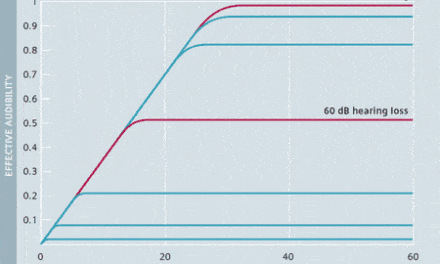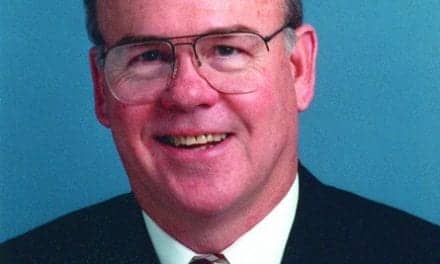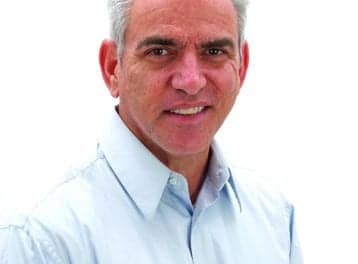Here is a short summary of some of the key changes to the ubiquitous NAL fitting algorithm, including the formula’s latest approach to compression attack-times, gender differences, binaural/monaural fittings, cases of mild-to-moderate loss, the wearer’s primary spoken language, and other factors.
Editor’s Note: Dr Galster regularly publishes commentary on interesting articles in the hearing care literature. This article was adapted from his March 1, 2012 blog post found at galster.net in which he and Dr Stevens focus on research from the 2011 paper published in Hearing Research by Keidser et al.1
For years, the National Acoustics Laboratories’ NAL-NL1 has been the benchmark for compressive, independently derived, prescriptive formulas.2 The recently introduced NAL-NL2 advances their original formula with knowledge gained from a wealth of empirical data collected with NAL-NL1.2 Similarities between NAL-NL1 and NAL-NL2 include:
- The primary goals of maximizing speech intelligibility while not exceeding overall normal loudness at a range of input levels, and
- The use of predictive models for speech intelligibility and loudness.3,4
The speech intelligibility model used in both NAL-NL1 and NAL-NL2 differs from the Speech Intelligibility Index (SII).5 The ANSI SII assumes that, regardless of hearing loss, speech should be fully understood when all speech components are audible. Included in NAL-NL1 is a modification to the SII proposed by Ching and colleagues.6 This modification or effective audibility factor assumes that, as hearing loss becomes more severe, less information can be extracted from the speech signal. More recent data have been collected to derive an updated effective audibility factor for use with NAL-NL2.1
The NAL-NL2 formula includes constraints to prevent compression ratios from exceeding a maximum value for a given frequency or degree of hearing loss. Modifications were based on data suggesting that users with severe or profound hearing loss prefer lower compression ratios than those prescribed by NAL-NL1, when fitted with fast-acting compression.7 However, there is evidence to suggest that higher compression ratios could be used in this population with slow-acting compression. Therefore, in the case of severe or profound hearing losses, the new formula prescribes lower compression ratios for fittings with fast-acting compression than those with slow-acting compression. For mild and moderate losses, compression speed does not affect prescribed compression ratios.
Based on experimental outcomes with NAL-NL1 fittings, the development of NAL-NL2 took various attributes of the hearing aid user into consideration, such as gender, binaural listening, experience level, age, and language. In the case of gender, Keidser and Dillon8 studied the real-ear insertion gain measurements for the preferred frequency responses of 187 adults, finding that, regardless of experience or degree of hearing loss, female participants preferred an average of 2 dB less gain than male participants. As a result, gender differences are factored into each fitting.
The NAL-NL2 method still prescribes greater gain for monaural fittings than it does for binaural fittings. This difference is similar to the NAL-NL1 formula.9 Recent studies suggest that the binaural to monaural loudness difference may be less than previously indicated.10 For symmetrical hearing losses, the binaural difference ranges from 2 dB for inputs below 50 dB SPL to 6 dB for inputs above 90 dB SPL, so binaurally fitted users will have higher prescribed compression ratios than monaural users. For asymmetrical losses, the binaural correction decreases as the asymmetry increases.
READ Keidser and Grant’s article about loudness normalization vs speech intelligibility maximization (January 2003 HR).
Experience with hearing aids as it relates to degree of hearing loss is a consideration in the NAL-NL2 formula. Keidser and her colleagues11 found that, with increasing severity of hearing loss, new users prefer progressively less prescribed gain than experienced hearing aid users. Although this observation does not agree with several other studies,12,13 the NAL-NL2 recommends gain adaptation for new hearing aid users with moderate or severe hearing loss. Further details of this discrepancy will be addressed in a future publication (personal communication, Gitte Keidser, 2012).
The developers of the NAL-NL2 formula determined that adults with mild-to-moderate hearing loss preferred less overall gain for 65 dB inputs than would be prescribed by NAL-NL1.11 This is corroborated by other studies13,14 in which hearing aid users with mild-to-moderate hearing loss preferred less gain for high and low level inputs. These reports indicate that participants generally preferred slightly less gain and higher compression ratios than those prescribed by NAL-NL1—a preference that was incorporated into the revised prescriptive procedure.
The NAL-NL2 also takes the hearing aid user’s language into consideration. For speakers of tonal languages (eg, many East Asian languages, including Chinese), slightly more low-frequency gain is prescribed. Increased gain in the low-frequency region more effectively conveys fundamental frequency information, an especially important cue for recognition of tonal languages.
Like its predecessor, the NAL-NL2 fitting formula leverages theoretical models of intelligibility and loudness perception to maximize speech recognition without exceeding normal loudness. The revised formula takes into consideration a number of factors other than audiometric information and benefits from extensive empirical data collected using NAL-NL1. Ultimately, the NAL-NL2 procedure results in a slightly flatter frequency response, with relatively more gain across low and high frequencies and less gain in the mid-frequency range than in the NAL-NL1 formula.
The study of objective performance and subjective preference with hearing aids is constantly evolving, and the NAL-NL2 prescriptive method may be a step toward achieving increased acceptance by existing hearing aid users and improved spontaneous acceptance by new hearing aid users.
Acknowledgements
The authors thank Gitte Keidser, PhD, for her comments on a draft of this summary. Many of the works cited were completed by Drs Keidser, Harvey Dillon, PhD, and the talented research staff of the NAL and other laboratories. This article was based on an original blog post (March 1, 2012) found at: http://galster.net
CORRESPONDENCE can be addressed to:
References
- Keidser G, Dillon H, Flax M, Ching T, Brewer S. The NAL-NL2 prescription procedure. Audiol Res. 2011;1(e24):88-90.
- Dillon H. Page Ten: NAL-NL1: A new procedure for fitting non-linear hearing aids. Hear Jour. 1999;52:10-16.
- Moore BCJ, Glasberg B. A model of loudness perception applied to cochlear hearing loss. Aud Neurosci. 1997;3:289-311.
- Moore BCJ, Glasberg B. A revised model of loudness perception applied to cochlear hearing loss. Hear Res. 2004;188:70-88.
- American National Standards Institute (ANSI). Methods for calculation of the speech intelligibility index. ANSI S3.5-1997. New York City: Acoustical Society of America; 1997.
- Ching T, Dillon H, Byrne D. Speech recognition of hearing-impaired listeners: Predictions for audibility and the limited role of high frequency amplification. J Acoust Soc Am. 1998;103(2):1128-1140.
- Keidser G, Dillon H, Dyrlund O, Carter L, Hartley D. Preferred low and high frequency compression ratios among hearing aid users with moderately severe to profound hearing loss. J Am Acad Audiol. 2007;18(1):17-33.
- Keidser G, Dillon H. What’s new in prescriptive fittings down under? In: Palmer CV, Seewald R, eds. Hearing Care for Adults 2006. Stafa, Switzerland: Phonak AG; 2006:133-142.
- Dillon H, Keidser G, Ching T, Flax M. The NAL-NL2 Prescription Formula. Paper presented at: Audiology Australia 19th National Conference; May 2010; Sydney, Australia.
- Epstein M, Florentine M. Binaural loudness summation for speech and tones presented via earphones and loudspeakers. Ear Hear. 2009;30(2):234-237.
- Keidser G, O’Brien A, Carter L, McLelland M, Yeend I. Variation in preferred gain with experience for hearing aid users. Int J Audiol. 2008;47(10):621-635.
- Convery E, Deidser G, Dillon H. A review and analysis: Does amplification experience have an effect on preferred gain over time? Aust N Z J Audiol. 2005;27(1):18-32.
- Smeds K, Keidser G, Zakis J, et al. Preferred overall loudness. II: Listening through hearing aids in field and laboratory tests. Int J Audiol. 2006;45(1):12-25.
- Zakis J, Dillon H, McDermott HJ. The design and evaluation of a hearing aid with trainable amplification parameters. Ear Hear. 2007;28(6):812-830.
Citation for this article:
Galster JA and Stevens K. What’s New About NAL-NL2? Hearing Review. 2012;19(09):28-31.





